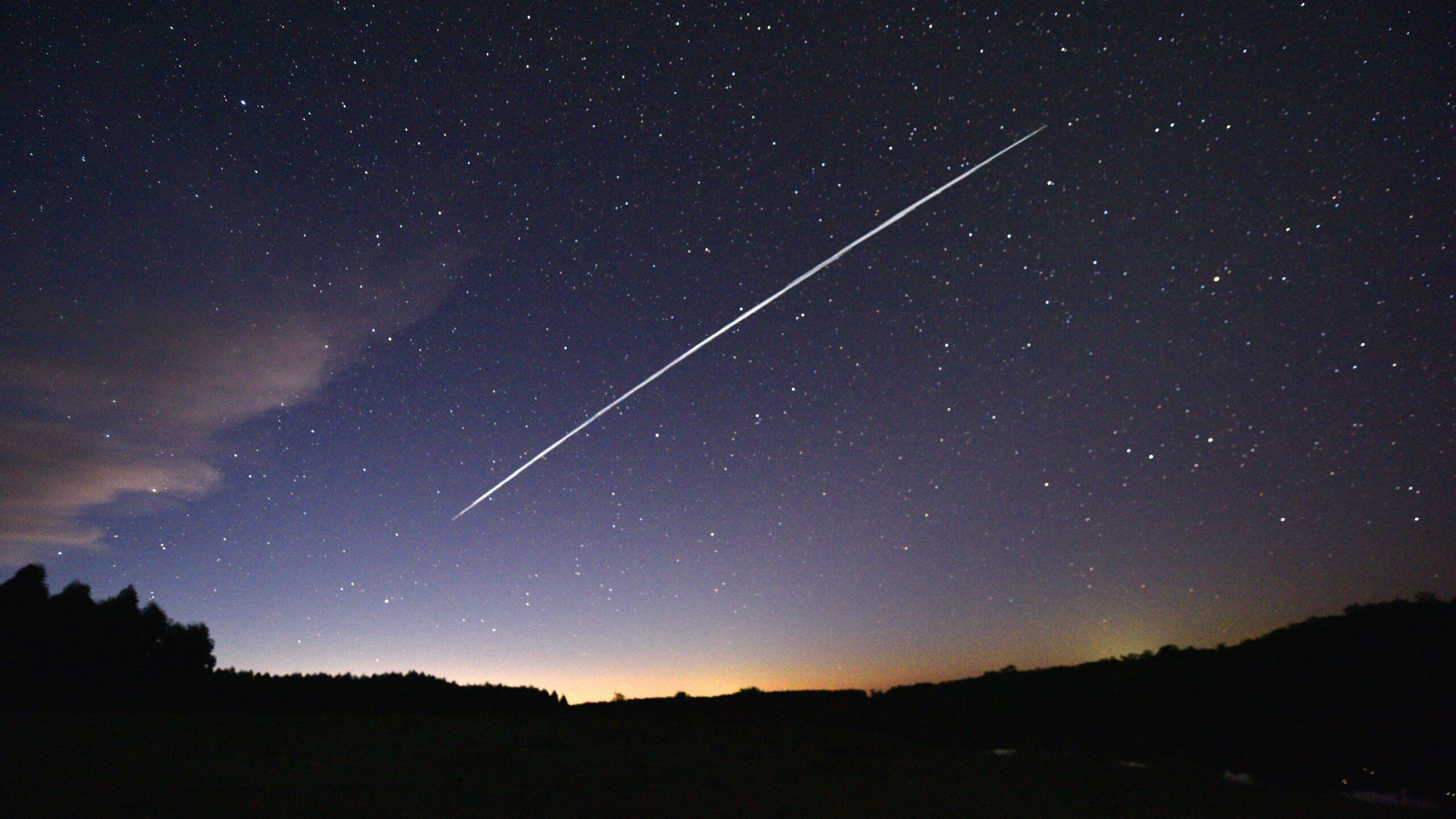A trail of a group of SpaceX’s Starlink satellites passing over Uruguay. The Pentagon is seeing an uptick in reports that mistake Starlink for UFOs. (Photo by Mariana SUAREZ / AFP) (Photo by MARIANA SUAREZ/AFP via Getty Images)
WASHINGTON — The Defense Department today issued its fiscal 2024 report on Unidentified Anomalous Phenomena (UAP), which once again, finds no evidence of aliens among the 757 UAP sightings documented — but does include a few new details about the Pentagon’s mysterious GREMLIN sensor suite designed to detect, track and hopefully figure out what those weird lights in the sky (or under the sea) actually are.
The report, issued by DoD’s All-Domain Anomaly Resolution Office (AARO), covers a total of 757 reported incidents: 485 that occurred between May 1, 2023 to June 1, 2024; and another 272 incidents between 2021 and 2022 but were not relayed to AARO until this reporting cycle. Many of those incidents occurred near military bases or US nuclear facilities, the report adds.
AARO says it resolved 118 of the cases as involving “prosaic objects such as various types of balloons, birds, and unmanned aerial systems (UAS); and another 174 are near to closure for same reasons.
“I want to emphasize that although only a very small percentage of reports to AARO are potentially anomalous, these are the cases that require significant time, resources and a focused scientific inquiry by AARO and its partners,” Jon Kosloski, AARO director, told reporters today.
“It is also important to underscore that to date, AARO has discovered no verifiable evidence of extraterrestrial beings, activity or technology. None of the cases resolved by AARO have pointed to advanced capabilities or breakthrough technologies,” he added.
The AARO report, perhaps unsurprisingly, throws cold water on some of the more out-there allegations made during recent hearings in the House Oversight and Accountability Committee — such as claims that the Pentagon has discovered evidence of alien craft and biological material. For example, at a joint hearing of the Cybersecurity, Information Technology, and Government Innovation subcommittee and the National Security, the Border, and Foreign Affairs subcommittee on Wednesday, several witnesses alleged that DoD and the White House are hiding evidence of alien activity, including crashes of extraterrestrial craft, from Congress and the public in top secret programs. (The Pentagon has denied such a concerted coverup.)
Most of the cases documented in the AARO FY24 report, as in previous reports, involved objects in the atmosphere reported by civil and military pilots, the report explains.
“Of these reports, 708 occurred in the air domain, 49 occurred in the space domain, and none occurred in the maritime or transmedium domains,” it says. (Transmedium refers to objects that cross domains, such as flying from the atmosphere into outer space.)
The report notes that there has been an uptick in cases that involve observers mistaking satellites in SpaceX’s massive Starlink broadband constellation for UAPs.
“AARO increasingly receives cases that it is able to resolve to the Starlink satellite constellation,” it says. “AARO is investigating if other unresolved cases may be attributed to the expansion of the Starlink and other mega-constellations in low earth orbit.”
An overview of the GREMLIN network for detecting UAPs. (DoD All-domain Anomaly Resolution Office, Nov. 14, 2024)
GREMLIN And Other Tools
Aliens or not, the report further provides details about AARO’s efforts to improve its ability to detect, track and characterize UAP — including a bit more information about the GREMLIN sensor architecture first revealed by the office last year.
GREMLIN is a network of 2D and 3D radar, and long-range electro-optical and infrared telescopes developed by the Georgia Tech Research Institute, the report explains. 2D radar measure range and azimuth (direction); 3D radar measure range, azimuth and elevation of target objects.
The report says that GREMLIN “successfully collected data” during a test in March, and will now be deployed at a “national security site” for a 90-day “pattern of life collection.”
Kosloski refused to reveal the exact location, although he said GREMLIN already is in place there.
“We’d rather not say exactly where it is, because we want it to be an unbiased test and don’t want to invite folks to come and do flyovers and test against the system. We chose that specific location because of the environment. We expect there to be a lot of variety in the types of things that we’re going to see. And there had been UAP reports in that general area,” he said.
The report further says that AARO is developing a new science and technology plan to outline and address “the challenges facing UAP detection and identification such as a lack of high quality sensor data and a series of gaps in the scientific knowledge base.”
For example, Kosloski said his office intends to increase its engagement with foreign partners to obtain a broader array of sensors, data, and information on UAP.
Finally, he acknowledged that Congress has an “understandable concern” about secrecy surrounding UAP, but explained that the process for lowering classification is complicated because it involves numerous agencies, including from the Intelligence Community (IC). Nevertheless, he added, AARO has “taken significant steps” to try to speed declassification of what it can release without jeopardizing “sensitive” information, for example that could reveal IC sources and methods.
“We’ve hired a number of declassification experts. We’re going to be hosting a declassification workshop so we can make sure we’re implementing best practices from across the DoD and the IC. All of that takes more time than I think the public would like for it to take. But ARRO is working on it,” Kosloski said.










